Osmunda claytoniana
The sori of the fern interrupt the leaflets on the sterile frond
Osmunda claytoniana interrupted fern
Large, coarse fern, that is arching in growth. The wooly fiddleheads of this fern and its bright-green pinnae are quite similar to those of the Cinnamon fern. Both grow in wet, boggy areas, although interrupted fern can also grow in drier locations. The fertile pinnae of interrupted fern are located between the sterile pinnae in the middle or so of the frond giving the fronds an unusual shape. The central pinnae are the spore-bearing parts of the plant.
Habitat & Range
Moist woods, ditches, swamp edges, wet or dry meadows. Often in fairly well-drained soils that are subacid and rich in mineral nutrients. as well as wet areas.
Range is from Canada and Maine to Minnesota and southward to North Carolina and Missouri.
| EMP: | FAC |
|---|---|
| NCNE: | FAC |
Characteristics
Fronds grow in arching form from a central crown; fertile fronds more erect; sterile fronds more arching and spreading. From 1 to 5 ft. long.
Sterile blade large, coarse, elliptic; broadest in the middle and blunt at the apex. When first expanding, covered in thick, white wool, later becomes smooth throughout. Cut into 10 to 20 pinnules.
Fertile blade more erect, taller, and often more numerous. Interrupted by 2 to 5 pairs of fertile pinnae in the midsection of the blade.
Sterile pinnae narrow, lanceolate, broadest near rachis, tapering gradually to blunted tips. Lower pinnae below interruption are ascending, opposite, spaced widely, and often smaller than the upper pinnae. Deeply cut into oval, blunt-tipped or rounded, semi-overlapping lobes. Young pinnae have light tan wool, soon lost. Veins forked once.
Fertile pinnae 2 to 5 pairs of small pinnae in lower half of fertile blade. Dark green, densely covered with mature sporangia, later turning deep dark brown. Ripens and withers rapidly leaving interrupted space in the blade in early summer onward.
Rachis smooth, green, semi-grooved in front.
Stipe with light brown hairs early, then becoming smooth; green and stout. Stipes of fertile fronds are longer.
Rhizome very stout; creeping; stubbly with remnants of stipe bases.
Sori none, naked sporangia short-stalked and clustered; start out green then turns dark brown.
Identification Tips
Pinnae are semi-overlapping.
Plant Codes
S-rank: No rank
G-rank: G5 (Secure)
APG/Taxonomization Info
The epithet claytoniana was given to this fern in honor of an early American botanist John Clayton by his friend Linnaeus.
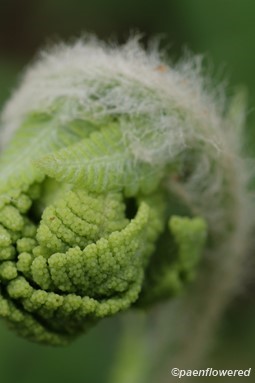


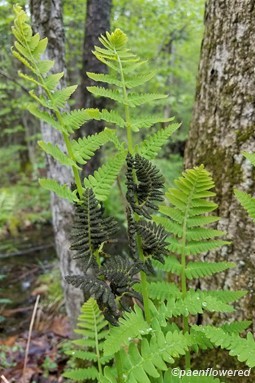
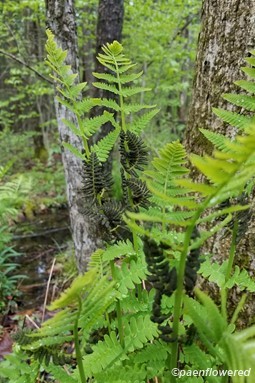
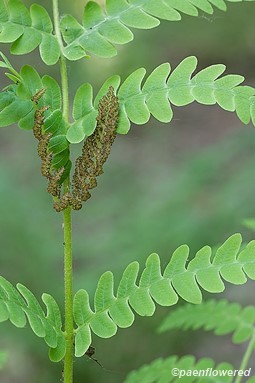
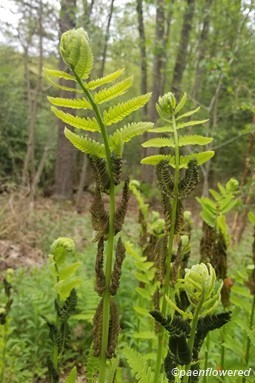
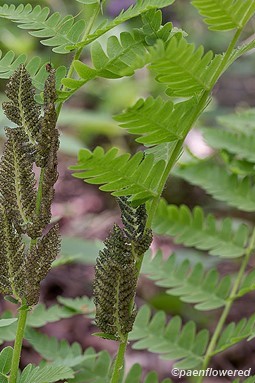
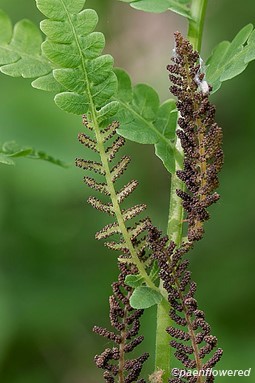
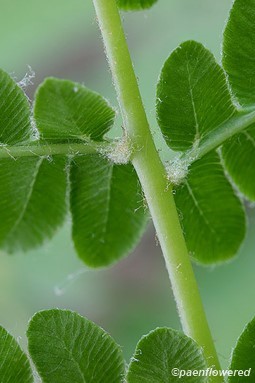
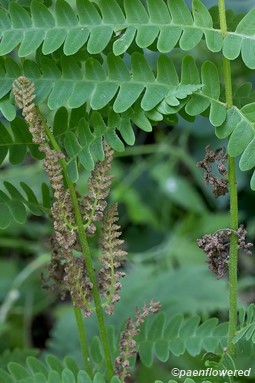

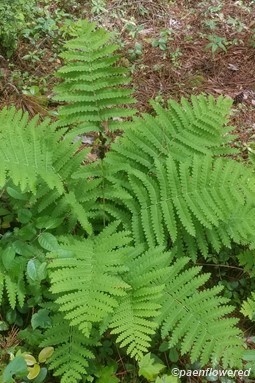

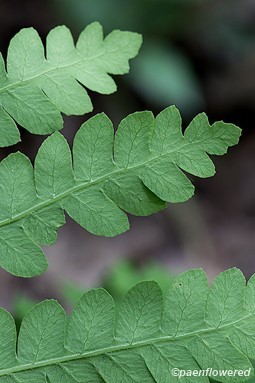
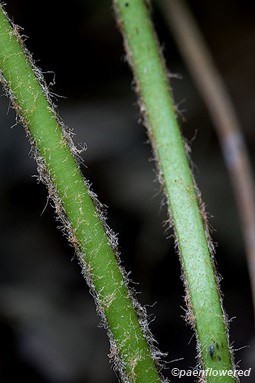

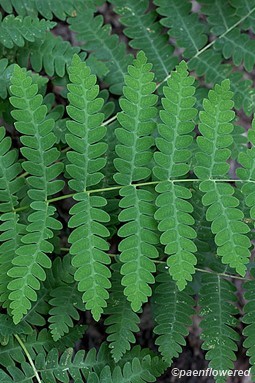

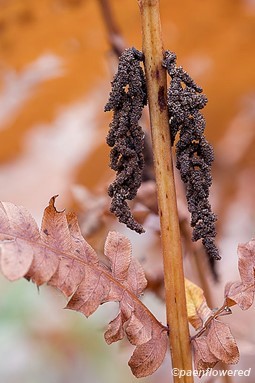


Comments
Have you spotted this plant in your area? We'd love to hear about your experience! Share your comments or questions about the plant below. Comments are moderated before posting.